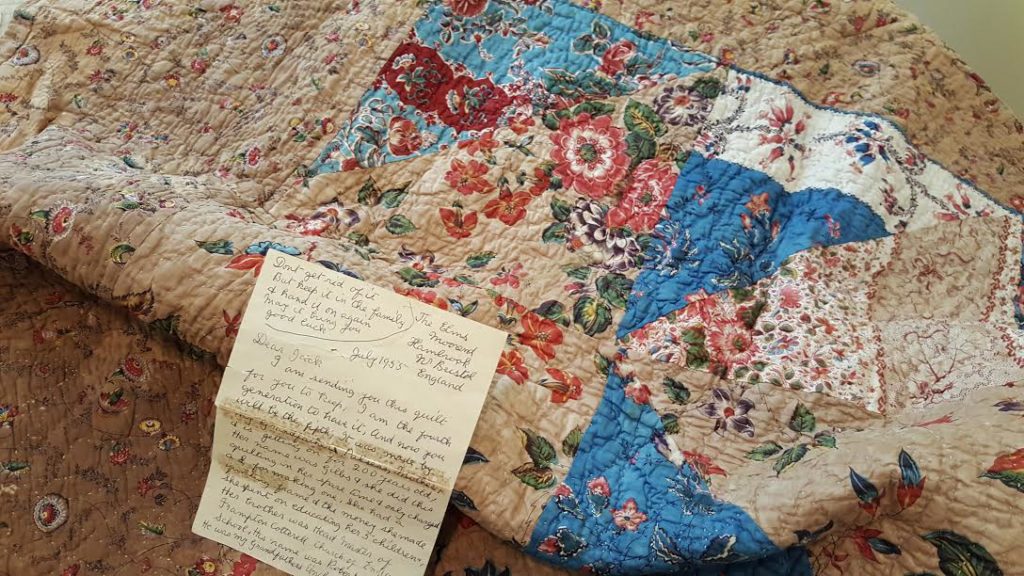We’ve recently received a very special package from Edmonton, and as it’s a remarkable one, I wanted to share the story.

For many years, Bryan’s mother had a very old quilt tucked away in her linen closet. It was bundled with the printed side in and wrapped in plastic, so I had actually never seen it until just recently. We received it last month from Michelle, and were amazed when we opened the parcel. Not only is it in beautiful condition for its age, but it also has a letter attached that gives us some clues about its history.

The letter is dated 1952, and is addressed to Bryan’s late grandfather Jack Holloway. The writer is from Bristol in England, and she sent the letter to him in that year along with the quilt in order to keep it in the family. She writes that she is a distant relation to Jack, and that the woman who made the quilt was her great grandmother, a lady whose maiden name was Gibbs and whose brother was the Head Master of the Frampton Cotterell Church of England. This lady made quilts to help educate her children, and the unnamed writer indicates that she is the fourth generation of her family to have this one.
Jack Hollway was the fifth generation to have it, Carolyn Holloway the sixth, and Bryan will be the seventh. This dates the quilt to the late 1700s or early 1800s. Considering all of the places it has traveled to and all of the families that have owned it, the quilt is in incredible condition. It is pieced of printed cotton in cerulean blue, raspberry, beige and cream, with a cream back. The stitches are even and tiny, and the patterns have been put together with an artistry that hints at the sophisticated design sense of the quilter.
And now, here it is at our house. We are intending to hang it on a rod in our guest room, in a spot out of the direct sunlight. It’s just too exquisite to keep hidden away, even if that’s probably the best way to preserve it. I am interested in finding out more about the fabric that was used, to help date it more specifically and perhaps even get a better idea about the region in which it was made. The Victoria Quilters Guild and the Textile Museum of Canada are both great places to start gathering information.
It’s a wonderful thing to hold a unique piece of family history like this. Not only is it a beautiful object in its own right, but it brings history to life, with the maker’s fingerprint boldly alive in every stitch.
